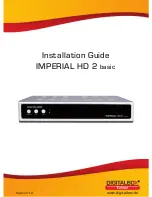
60
USING THE BCD996P2 WITH A GPS
LOCATION-BASED SCANNING
You can connect the scanner to a compatible GPS device and set the scanner to automatically
lock and unlock trunked sites and channel groups based on the location information and range
settings you program for those sites/groups. This frees you from having to manually enable
and disable sites/groups as you change location. The BCD996P2 uses the data, supplied by
an (optional) attached GPS unit, that allows the radio to automatically unlock and lockout sites/
groups based on latitude and longitude. It uses the (programmed) center of the site/group, and the
(programmed) range - the radius of a circle around the latitude and longitude up to 125 miles from
that center.
A good application of this feature would be to set the longitude and latitude for each multi-site
system transmitter as usually you can receive at least a handful in any given location.
You can find the physical location of antennas using the databases available at Radio Reference
or the FCC’s Antenna Structure Registration site. Both sites list the latitude, longitude, and height
of the antenna and both sites can map the exact location for you. Radio Reference is more user-
friendly, so it’s easier to find what you’re looking for.
NON RADIO LOCATION-BASED GPS FEATURES
When connected to a GPS, you can program specific location information which will trigger an
alert from the scanner. The scanner becomes an extension of the GPS device. Even if you don’t
use the scanner to scan, you can enhance you GPS unit with information the scanner provides.
The scanner also allows you to program audio and/or visual alerts for a:
Point of Interest (POI):
Stores location and range. If you approach the set location, the radio
sounds an alert up to 4 miles/km from the center.
Dangerous Road/Dangerous Crossing:
Stores location, direction of travel, and speed. If you
are traveling at a speed greater than that specified, in the direction specified, and if you are within
range of the set location, the scanner sounds an alert at 1, .5, and .1 miles/km from the point.
These range distances are also automatic and fixed.
You can also temporarily lockout (cancel) any combination of these alerts.
CONNECTING YOUR SCANNER
The GPS device must have a serial (RS-232) output, and be capable of outputting standard
NMEA-0183 v3.01 compliant location data, and GGA/RMC data sentences at 4800 bps. Make
sure that the cable terminates in a female, 9-pin serial connector and you select the correct baud
rate (4800 bps) for the rear serial port.
The scanner will display ‘Searching for Satellite’ in GPS Display Mode until it receives the signal
from the satellite if you have your connections and baud rate set correctly. The first time the
scanner starts receiving a signal from the GPS, it beeps and briefly displays ‘GPS Connected’
and (temporary) locks and unlocks all sites and groups that are ‘enabled for scan’, unlocked,
and whose quick key is enabled according to your current location. If you have a lot of data
programmed, it might take the scanner a couple of minutes to complete the process. Once the
scanner completes the initial GPS review, if you move into or out of an area covered by a site/
group, the scanner beeps and displays the name of the site/group and whether it is being locked
or unlocked.
If you cycle power, all sites/groups (enabled for scan) are unlocked until the scanner reacquires
the GPS signal and completes the initial GPS review.
















































